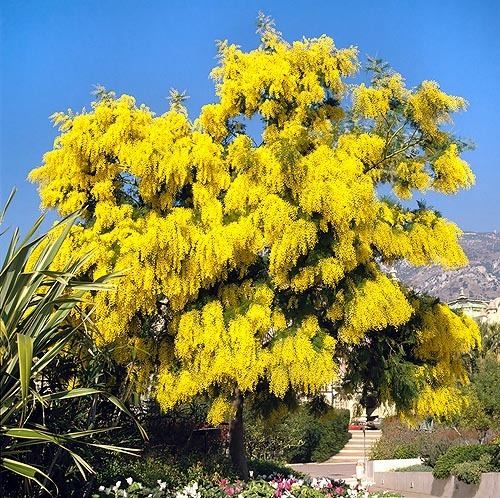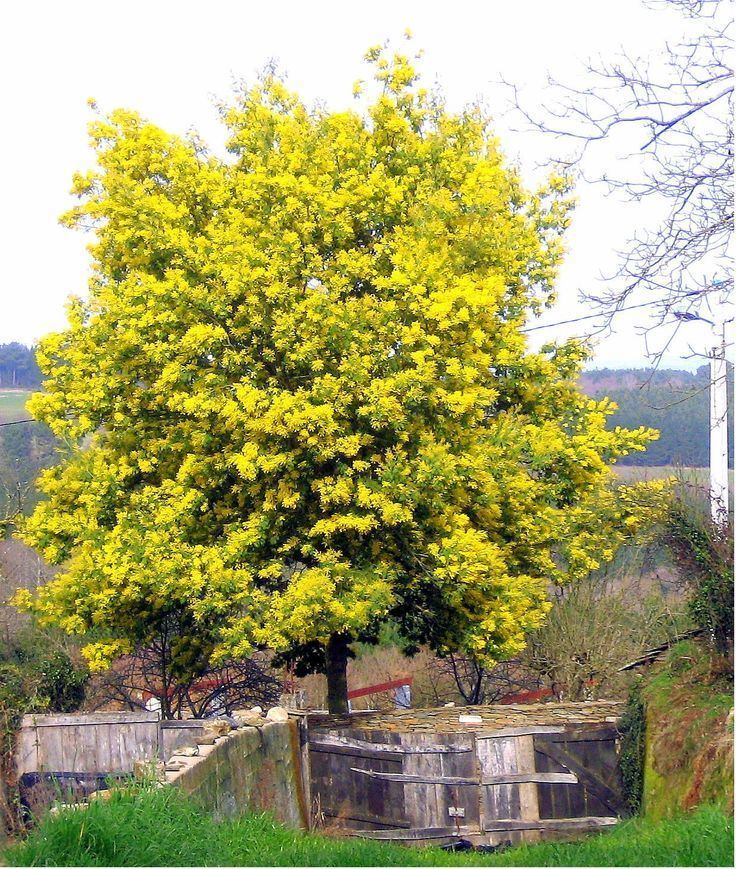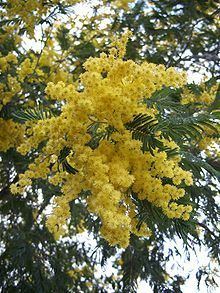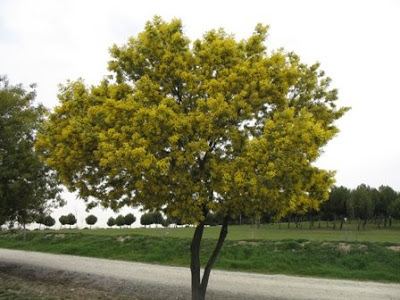Genus Acacia Rank Species | ||
 | ||
Similar Thorn trees, Sensitive plant, Acacia pycnantha, Acacia baileyana, Acacia | ||
Andrew mcindoe talks to shoot gardening about acacia dealbata gaulois astier
Acacia dealbata (known as silver wattle, blue wattle or mimosa) is a species of Acacia, native to southeastern Australia in New South Wales, Victoria, Tasmania, and the Australian Capital Territory and widely introduced in Mediterranean, warm temperate, and highland tropical landscapes.
Contents
- Andrew mcindoe talks to shoot gardening about acacia dealbata gaulois astier
- Acacia dealbata
- Taxonomy
- Description
- Subspecies
- Cultivation and uses
- References

Acacia dealbata
Taxonomy

Along with other bipinnate wattles, Acacia dealbata is classified in the section Botrycephalae within the subgenus Phyllodineae in the genus Acacia. An analysis of genomic and chloroplast DNA along with morphological characters found that the section is polyphyletic, though the close relationships of many species were unable to be resolved. Acacia dealbata appears to be most closely related to A. mearnsii, A. nanodealbata and A. baileyana.
Description

It is a fast-growing evergreen tree or shrub growing up to 30 m tall, typically a pioneer species after fire. The leaves are bipinnate, glaucous blue-green to silvery grey, 1–12 cm (occasionally to 17 cm) long and 1–11 cm broad, with 6–30 pairs of pinnae, each pinna divided into 10–68 pairs of leaflets; the leaflets are 0.7–6 mm long and 0.4–1 mm broad. The flowers are produced in large racemose inflorescences made up of numerous smaller globose bright yellow flowerheads of 13–42 individual flowers. The fruit is a flattened pod 2–11.5 cm long and 6–14 mm broad, containing several seeds. Trees generally do not live longer than 30 to 40 years, after which in the wild they are succeeded by other species where bushfires are excluded. In moist mountain areas, a white lichen can almost cover the bark, which may contribute to the descriptor "silver".
Subspecies
There are two subspecies:

Some authorities consider A. dealbata to be a variant of Acacia decurrens.
Cultivation and uses

Acacia dealbata is widely cultivated as an ornamental plant in warm temperate regions of the world, and is naturalised in some areas, including Sochi (Black Sea coast of Russia), southwestern Western Australia, southeastern South Australia, Norfolk Island, the Mediterranean region from Portugal to Greece and Morocco to Israel, Yalta (Crimea, Ukraine), California, Madagascar, southern Africa (South Africa, Zimbabwe), the highlands of southern India, south-western China and Chile It does not survive prolonged frost. It has gained the Royal Horticultural Society's Award of Garden Merit.

The timber is useful for furniture and indoor work, but has limited uses, mainly in craft furniture and turning. It has a honey colour, often with distinctive figures like birdseye and tiger stripes. It has a medium weight (540–720 kg/m³), and is similar to its close relative blackwood, but of lighter tone without the dark heartwood.
The flowers and tip shoots are harvested for use as cut flowers, when it is known by florist trade as "mimosa". In Italy, Albania, Russia and Georgia the flowers are also frequently given to women on International Women's Day. The essence of the flowers, called 'cassie' or 'opopanax', is used in perfumes. The leaves are sometimes used in Indian chutney.
In South Africa, the species is a Category 1 weed in the Western Cape (requiring eradication) and Category 2 weed (requiring control outside plantation areas) elsewhere. In New Zealand the Department of Conservation class it as an environmental weed. It has been analyzed as containing less than 0.02% alkaloids.
It is known to contain enanthic (heptanoic) acid, palmic aldehyde, anisic acid, acetic acid, and phenols.
